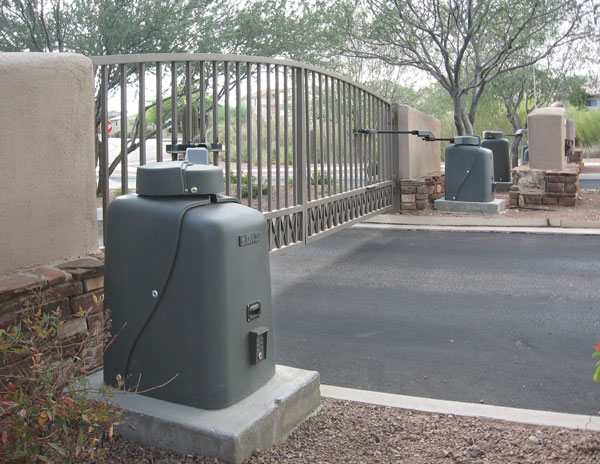
When you have the option to choose between a manual gate or an automatic gate, automatic gates always seem like the smarter option. Automatic gates, after all, have a lot to offer. Automatic gates are convenient, modern, can increase your property’s value, and make your home more appealing to buyers when you decide to sell it. In fact, automatic gates make life a little bit easier, like when you have your hands full and can’t open the gate manually. Or, when you drive home in the pouring rain and don’t have an umbrella or raincoat with you.
Electric or automatic gates, in a lot of ways, make perfect sense. However, there may be times when a manual gate does the job or maybe even does it better than its automatic counterpart.
Here are examples of scenarios wherein installing a manual gate is the most sensible option:
1. You Have a Low Fence & Gate
Low fences and gates are more of an aesthetic touch than an actual barrier between your home and the outside world. Their purpose is to improve your home’s curb appeal, not its security. If the gate is lower than your shoulder, it’s not much of an impediment either. You can easily reach over the other side and unlatch the gate if ever you’re locked out.
If this is your gate’s design, two of the most important qualities of automatic gates would be moot. The perceived improvements from installing automatic gate openers won’t be that significant, so you can do without them.
2. You Don’t Have a Garage or a Mile-Long Driveway
Automatic gates are impractical not only when their promised benefits are negligible, but also when they go overboard. It might be excessive, for example, to install an automatic sliding gate if you don’t have a car; your house is only a very short distance away from your gate, and no one in your household uses a wheelchair or crutches.
3. There’s Not Enough Space Between Your Swinging Gate & the Adjacent Wall
The U.S. Health and Safety Authority’s guidelines for powered gates state that there should be at least 500mm or about 20 inches of space between the swinging gate and the fixed object on its path (e.g., a perpendicular wall, the adjoining fence, the gate pillars). Swinging gates are crush hazards, so they must stop at the specific point that leaves 20+ inches of space between the gate and the nearest fixed object.
If the gap between the hinges and adjoining wall or fence is less than the required distance, a manual swinging gate would be safer than an automatic one.
Other Benefits of Manual Gates:
Here are a few more reasons to consider keeping a manual gate instead of switching to an automatic gate system:
- You spend less on electricity.
- You spend less on materials, installation, and maintenance.
- You have more control over the speed and angle when you open and close your gate.
- You’re not inconvenienced when there’s a power outage.
- Your gate will always be functional and independent of key cards, number codes, or fingerprint scans.
These are all excellent reasons for sticking with good old manual gates. If your residence is near or within Dallas-Fort Worth, we can install customized, manual gates at your convenience!